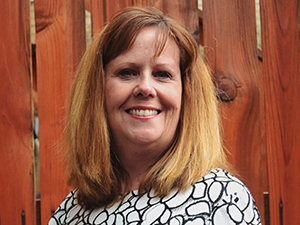Healing: Promising Mental Health + Medical Trends
What’s Next for Telemental Health?

For Michelle Miller, NCA’s mental health project coordinator, her proudest moment from 2020 was seeing our field come together in a crisis, everyone mobilizing at once to keep services available to kids and families. “We’ve spent the last two years exploring and planning how to integrate telehealth services into CACs. We see its value for kids and families in terms of access, whether you’re in rural America or you’re in an urban center. The pandemic pushed us rapidly into having to deliver therapy services through telemental health. Without that, kids would have been lost to care.”
What clinicians needed most from NCA just then, Miller said, was training resources “because clinicians didn’t know how to do this. They’re really good at the evidence-based treatments, but most of them had never done virtual sessions before.” NCA moved swiftly to bring in experts who already had experience in providing telemental health services, such as the CACs in North Dakota, who—despite how busy their leaders and clinicians were—went above and beyond the call of duty in helping other CACs implement telemental health programs.
NCA also teamed up with the Western Regional Children’s Advocacy Center to set up an ongoing series of mental health forums calls where clinicians could learn from each other what worked and what didn’t. Many were concerned because they weren’t familiar with the technology, and they knew that internet access and equipment (such as an iPad or computer) would be an issue for some of the families they wanted to serve. In the forum calls, they are able to share tips and strategies for how best to make this all work.
The upside to sorting all this out was that more kids showed up for their appointments. No-show rates went down; it was easier to connect online than for caregivers to take time off work or get multiple kids out of the house to an appointment. Another silver lining was that all of the trainings for evidence-based treatments recognized by NCA are now offered virtually. This makes them less expensive and more convenient for clinicians to attend.
What’s next for telemental health? We believe that there’s a place for it at CACs even after the pandemic is over, providing an opportunity for kids and families who otherwise would not be able to receive services. But Miller expects that “CACs will take a step back and look at developing processes, policies, procedures—figuring out which kids are most appropriate for telemental health.” And she expects to see more communities in underserved areas finally getting access to the services they need. “A dream of mine is to see how states can work together and provide services regardless of where that child and family are. Really utilizing those therapy resources to meet the needs of kids and families.”
